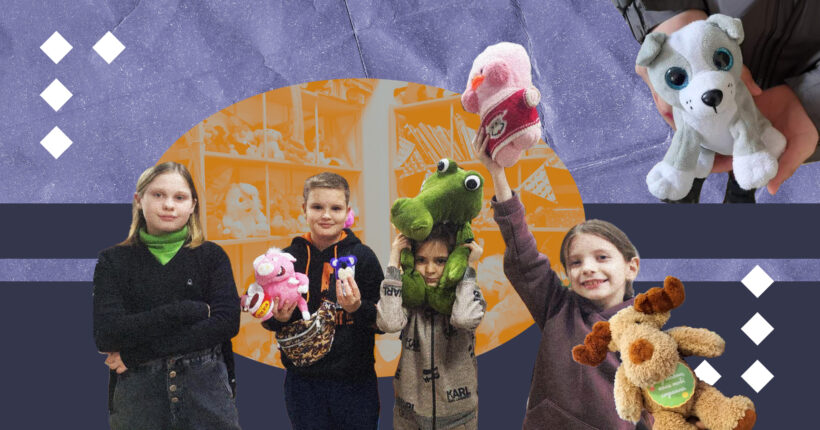
What is the problem?
Sashko is 11 years old. Fate took the most precious thing from him — his mother. She contracted cancer already during the war and later died. To make it easier for the boy to cope with the loss of his dearest person, his father enrolled Sashko in therapy. The psychologist's office is warm and quiet, there are a lot of soft toys, and you can talk about everything. Well, almost everything.
"We have already held several meetings with my young visitor. We talk about his condition, about what is happening to him, and that all this is completely normal now. Very little time has passed since the separation, so there are still a lot of emotions, but he is holding on," says psychologist Vita Moskalenko about her meetings with Sashko. At the beginning of the next session, she asks the boy to pick one of the plushies describing his mood today. Sashko chooses quickly.
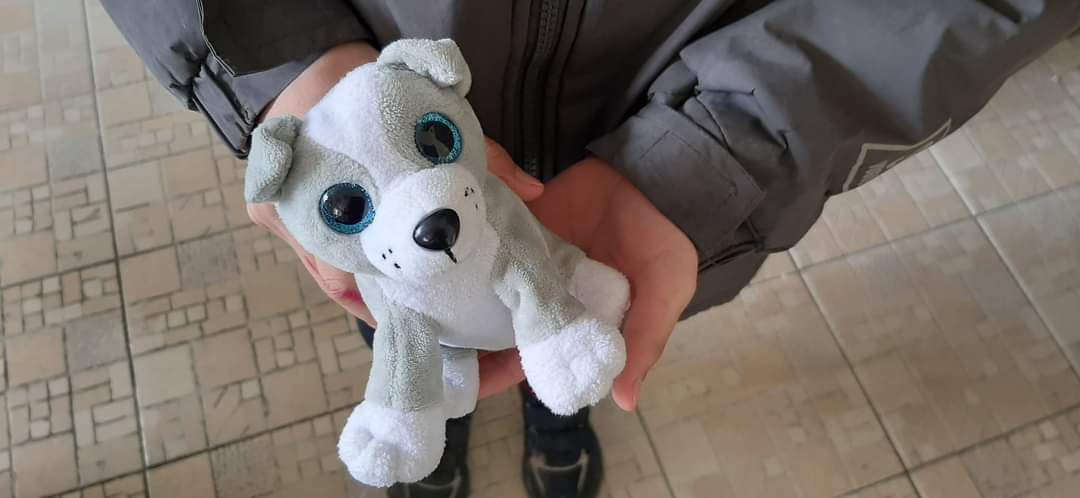
The dog that Sashko chose for himself.
The boy explains that the plushy looks like his dog that died two weeks ago. The psychologist lets the boy take the toy with him, which surprises the young patient. The psychologist is seeing the boy off, her heart aching and happy at the same time.
"I never know how and when a toy will work, but it has, for over a year and a half now!" shares Moskalenko.
She explains that in trauma, under challenging crises, even adults can be taken for several dozen years into childhood, where it is warm and cozy, where you are taken care of, and feel safe in the circle of relatives. Often, the toy symbolizes childhood that can become the necessary support, take on all the stress, stay by your side, and even listen to things that you can't tell everyone about.
What is the solution?
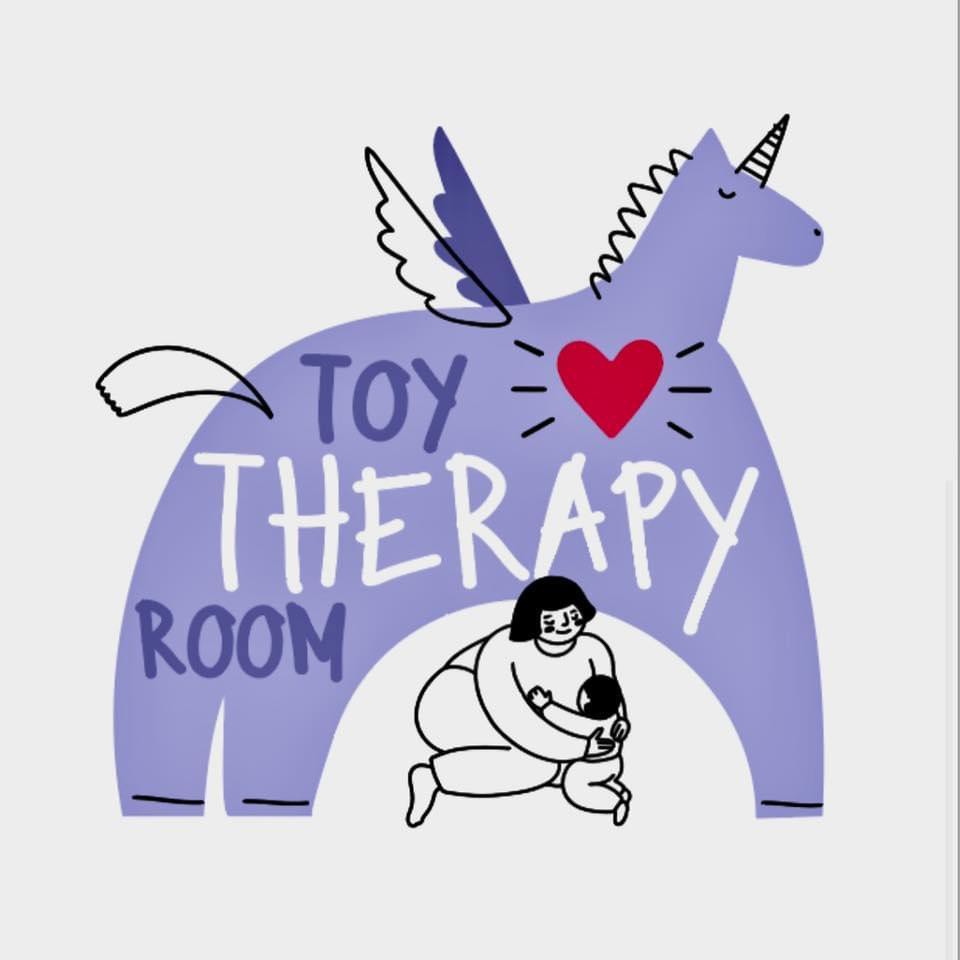
Project logo.
Toy therapy is an approach to psychological care in which a soft toy acts as a primary tool for communication and emotional expression. Toy Therapy Room is an all-Ukrainian charitable project, thanks to which spaces for toy therapy are now available in many corners of Ukraine. In times of war, it is a necessary and achievable way to build communication and create a safe space for those who are stressed, experiencing loss, and struggling with feelings of anxiety, anger, or fear.
To date, 55 toy therapy rooms have been opened in Ukraine. In these specially arranged spaces, experienced psychologists organize the communication process with the child so that they can release painful emotions, restore their resources, and gain confidence in their aspirations, needs, and future.
How does it work?
"Our fight is not only on the battlefield"
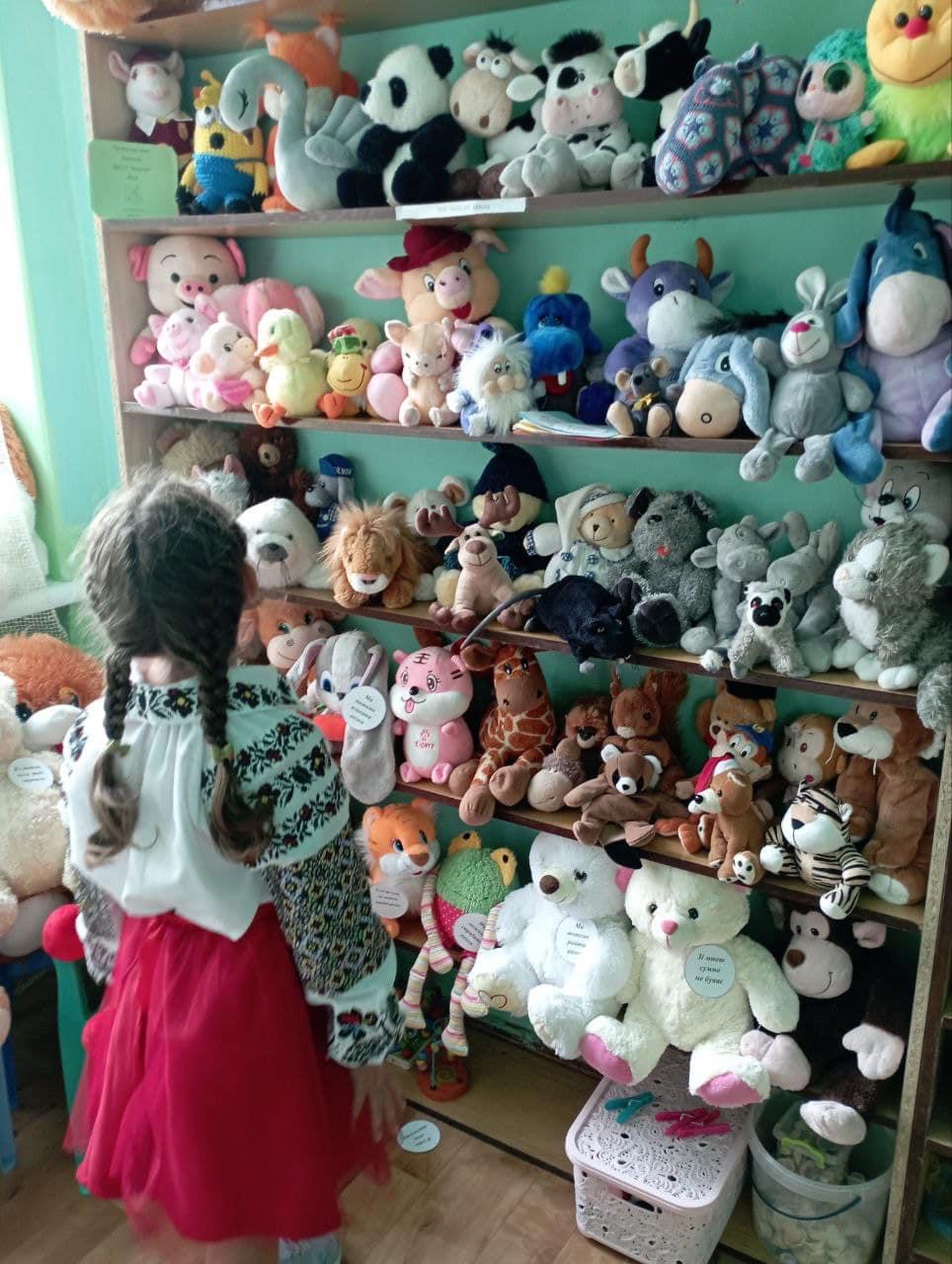
Toy Therapy Room is a space for children where a toy is a psychologist's assistant.
The Toy Therapy Room is a charity project that has been operating since the summer of 2022 with the support of the NGO Nation's Gene Fund. Its main goal is to provide emotional support to children and residents of Ukraine during the war. The author and permanent supervisor of the method of interaction with toys is Viktoriia Nazarevych, a Ukrainian psychologist, candidate of psychological sciences, and head of the educational portal on art psychology Nazarevych-art. The team consists of professional psychologists and art therapists, like-minded people who care about the future of Ukrainians.
"Our fight is not only on the battlefield because even now, it is so necessary to take care of a healthy, strong nation and make every effort to preserve the emotional health of every Ukrainian," says psychologist Moskalenko.
It all started with the fact that on the third day of the full-scale invasion, specialists who studied Nazarevych's programs united and began to think about how to assist people in an extreme crisis.
"We could not stand aside, observing the extreme stress and chaos experienced by the Ukrainians. It was necessary to act quickly and efficiently," recalls Moskalenko.
For the first month, psychologists studied daily via Zoom. This is how centers of crisis psychological assistance based on the methods of integrative art therapy emerged throughout Ukraine and even abroad, where community colleagues found themselves fleeing the war. Thousands of children and adults passed through these cells in the first months of the full-scale invasion. Here, they learned to cope with stress, release emotions, and gain much needed support.
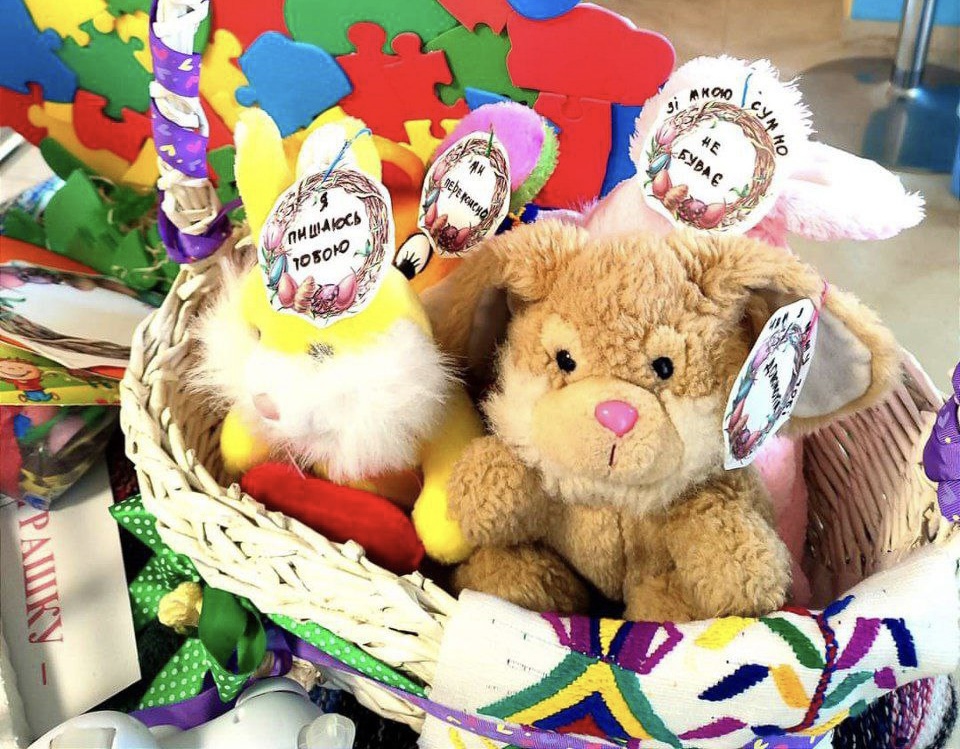
The toy therapy room is a method that Ukrainian psychologists developed during the war.
"During this period, we became acquainted with hibuki therapy and began to use this therapeutic toy in our classes. It was such a powerful support. However, emergency calls were increasing, children were extremely stressed, and hibuki dogs were in short supply. So we needed a quick and effective solution that would allow us to reach many people and help us respond to new challenges," Moskalenko recalls.
Then, the project created a unique method — Toy Therapy Room — a special play space for toy therapy. Toy Therapy Room is a creative and therapeutic space, and the toy here is an assistant, with the help of which the child and the psychologist interact. It makes this communication as soft as possible and natural for the child, removing unnecessary defenses and not injuring but, on the contrary, healing. Psychologists of art centers began to study again, and at the same time, they arranged rooms, appealed to local communities to provide space, and at the same time — encouraged people to share toys for therapy.
People were happy to respond. This, according to Moskalenko, was also therapeutic for them — by helping others, you heal yourself, says the psychologist. Psychologists and art therapists shared ideas, successes, and first impressions from meetings with small visitors to the newly created rooms, as well as extremely touching stories of soft healing.
What can a soft toy do?
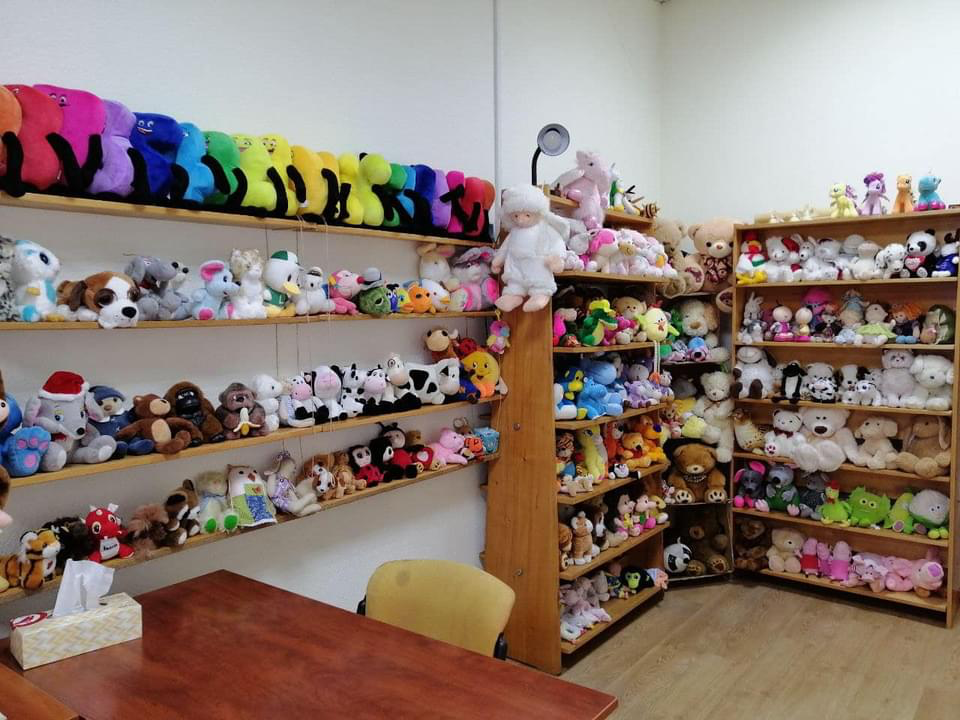
Hundreds of different soft toys live in each of the toy therapy rooms — teddy bears, bunnies, shaggy dogs, hedgehogs with soft needles, fairy-tale unicorns, dinosaurs, bees, and turtles. At the beginning of the meeting, each child can choose a new friend — a soft toy they like or something that resonates with them. The chosen toy stays with the child as they can take it home after the session.
What exactly does the toy help with?
- A toy is a distraction: In times of war, a toy can be an essential distraction from stressful situations and anxiety, helping to relieve tension.
- It becomes a psychological support: the toy can be a psychological support, helping to overcome difficult moments and inspiring hope and strength.
- It helps in development: for children, especially in times of war, a toy is a necessary element to maintain normal children's activities and development.
- It helps with "earthing": A toy can serve as a symbol of normality and stability during an unstable period, helping to maintain a connection with familiar joys.
- It has a therapeutic effect: playing with a toy can help to release emotions and improve psychological state.
- It entertains and educates: Some toys can be used for entertainment and education, which can be especially useful in wartime to preserve cultural and educational aspects.
- It "listens": at a time when parents or guardians are so exhausted that sometimes they do not have the strength to contain the emotions of children, the toy can become the one who listens and understands, with whom you can share your fears and to whom you can transfer stress. With the help of a toy, children are not left alone with the war challenges.
Psychologists note: in almost all cases, the chosen toy becomes a transitional object through which psychologists gently learn about the most challenging conditions of the child and correct them.
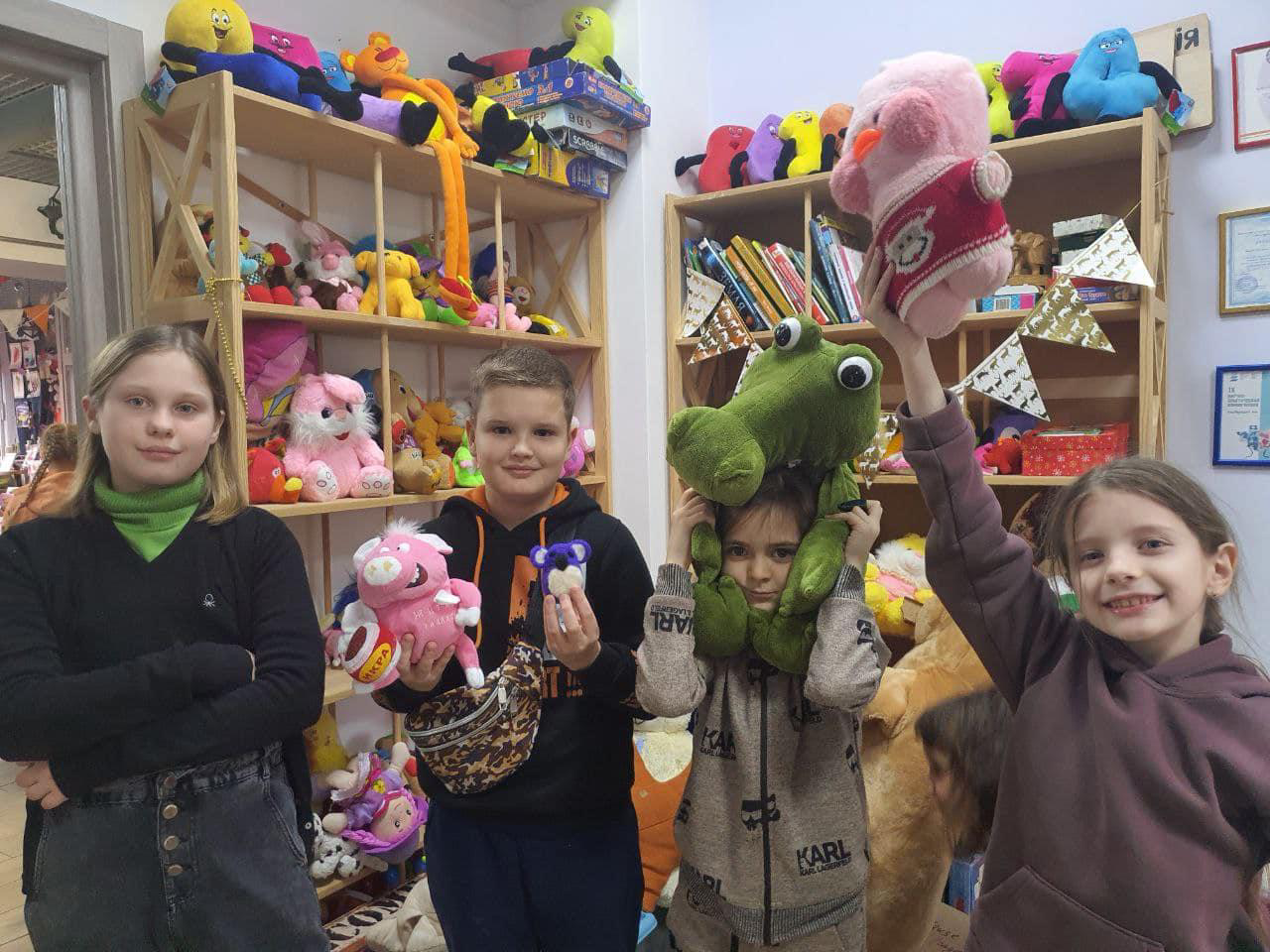
Children with toys in Kamianets-Podilskyi.
"In no case do we ask anything from the child so as not to traumatize them even more. The child tells everything themself when they feel a safe space and does it with the help of a toy," says Moskalenko and gives examples:
🐶 "I'm not afraid, but the dog is afraid," says the child about their toy. So first, the psychologist calms the dog down and then emphasizes that the child has also become brave.
🐱"This cat looks sad," says another kid. The psychologist works to help the child grieve when necessary.
🐯"The tiger knows how to growl," the psychologist asks if the child wants to growl too. This way, tension is safely released, and protective strategies are activated.
Working with psychologists in the Toy Therapy Room, children also sculpt a lot from clay or plasticine, cut, draw, tinker, and even create their own toys. Specialists do everything here to help children paint the brutal reality they live in today.
The main thing in the rooms is the atmosphere — of curiosity, something fabulous, pleasant, warm, filled with childhood. This gives a feeling of security and allows you to relax for at least a while and find yourself on, so to speak, an island of safety. Plus, contact with toys and creativity through art therapy fills with joy, and the feeling of joy itself can relieve stress and find strength for everyday routine: studies and household duties. After all, the war did not cancel all this, and the children have to learn and grow up. You can't put a child's life on pause.
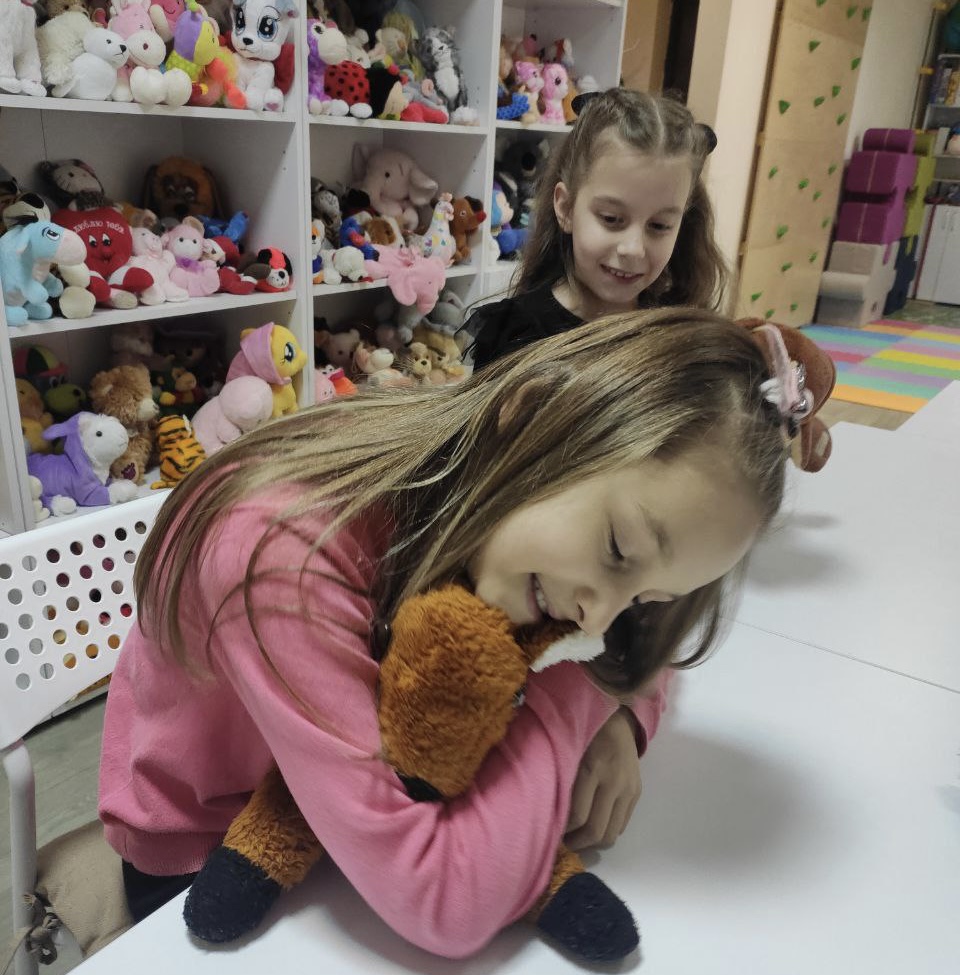
The space of toy therapy in Kyiv region's Bucha, which suffered immensely at the beginning of Russia's full-scale war.
The psychologist adds that sometimes, at the beginning of the meeting, the children are more reserved, but by the end of the session, which lasts from 25 minutes to an hour, they relax, walk around the space, start playing with the toys in the room, creating role-playing games.
Treat hearts with a toy
Children who come to toy therapy rooms suffer from various disturbances — sleep and appetite disorders, anxiety, fear, anger, and difficulties in learning. Children often say they want toys that help them learn. Psychologists are especially happy with stories when teachers support this idea and allow children to take toys to school to cope with stress.
Children, especially teenagers, are worried and saddened by being separated from their friends who have moved to other countries. Of course, the theme of death and loss is often troubling them.
"Once, at the end of 2023, we worked as a team of psychologists from three cities to support a family when they had to meet their father and a husband who had died," Moskalenko shares the painful experience. "We discussed how best to do it in their case and how to support the little one with the help of a toy." The team referred them to a toy therapy room in their city.
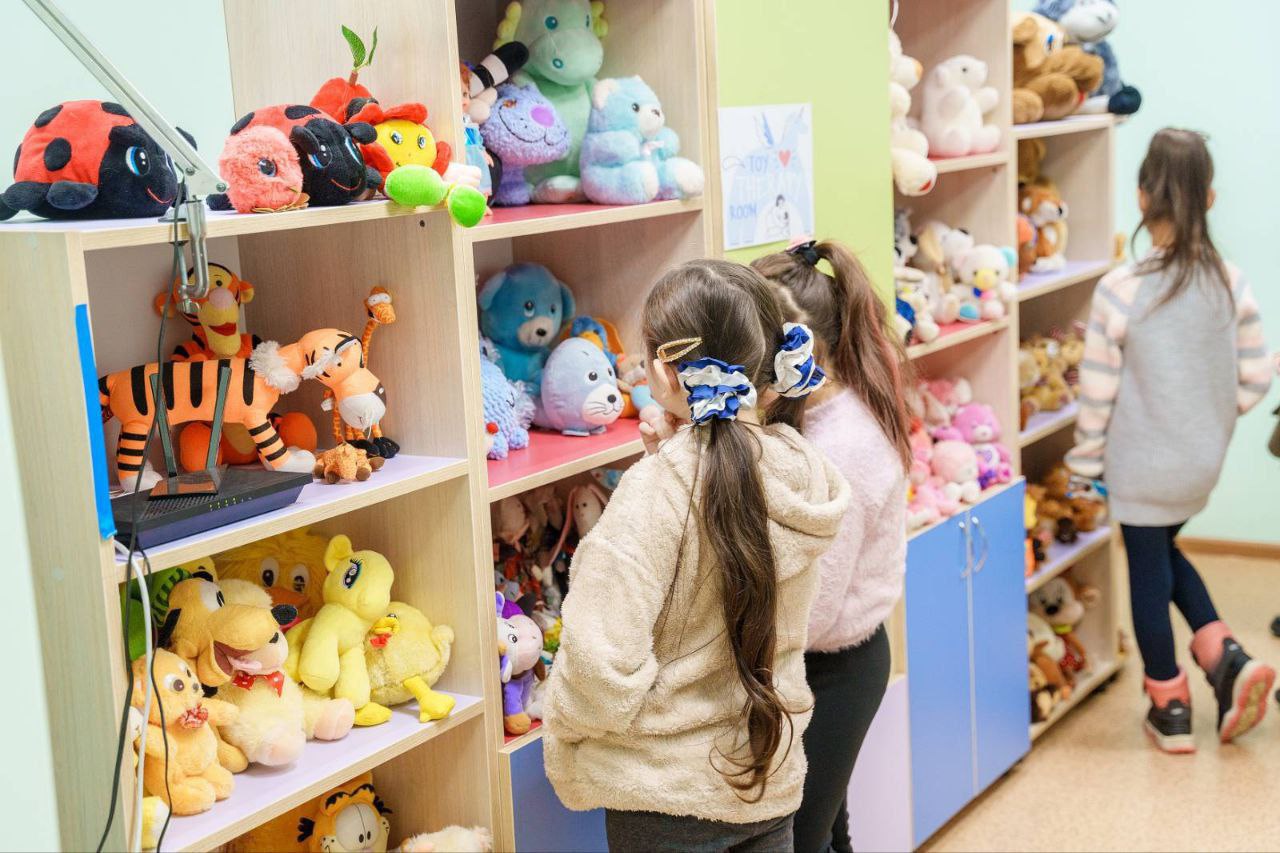
The exciting process of choosing a toy in a room in Vinnytsia.
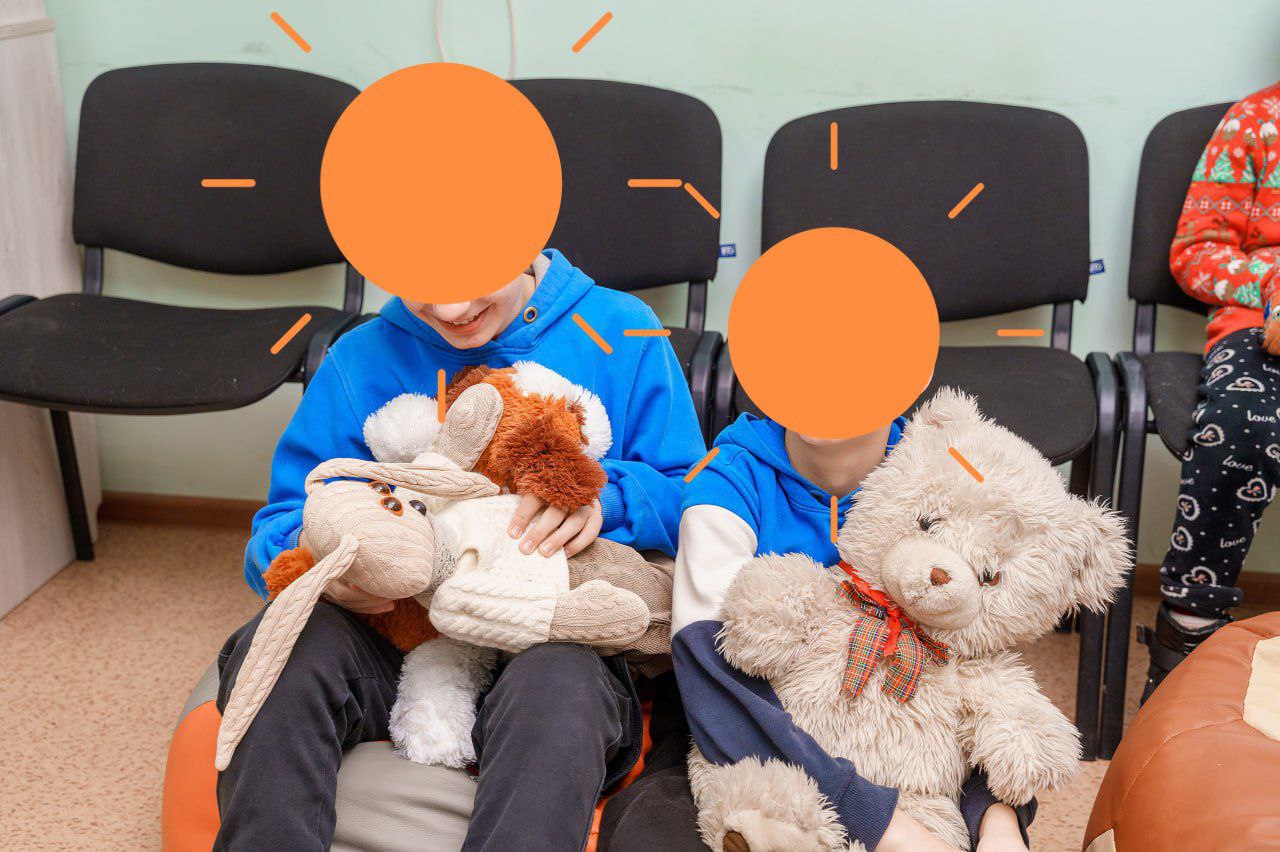
The toys chosen by the kids.
There are many stories of soft healing in the Toy Therapy Room project, and most of them are quite personal, but the space's psychologists still shared some with Rubryka.
A 12-year-old resettler came to one of the rooms. He is raised by a single mom. The child is independent, reads, and knows a lot but is not at all sentimental. The boy chose two large toys in the room: a dog and a hare. A dog because he is a protector, and to the hare because he is "cool." After some time, the boy's mother shared her surprise that a 12-year-old child could sleep with toys and hug them even though her son does not like tenderness and does not believe in fairy tales.
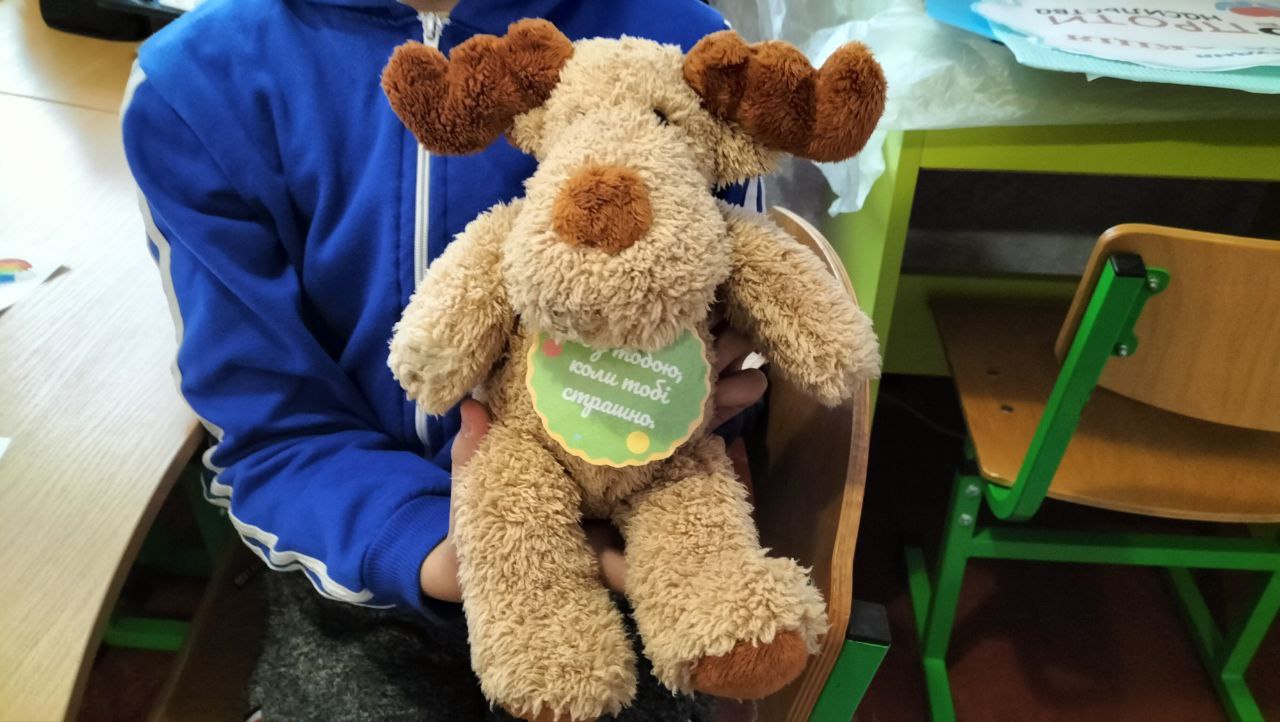
Another boy immediately chose the moose in the photo above because he has "good eyes." The boy carried the moose to every class until he was no longer afraid to come alone.
Toy therapy continues even after the toy remains with the child.
The psychologists discuss with the children how they will take care of the toy because, in this way, the child will actually take care of themself. Children repeatedly want to come to the room and choose another toy. Then, the psychologist might offer the child to share the toy they no longer play with and want to give to others. In this way, the transition to a new stage of healing is ensured when not only the child receives care but also can take care of others — that is, they become stronger in their strength.
Psychologists recommend that parents be patient and not obstruct the process. For example, children sometimes cover themselves in bed with a dozen toys, take them to the shelter, or hold them to themselves during alarms. In this way, they feel support and protection, which they may lack.
Does it really work?
The Toy Therapy Room project has been operating for over a year and a half in various cities and towns in Ukraine. It even has several branches abroad, for example, in Bulgaria. During this time, about 30,000 children received their toys, overcoming what prevented them from being calm and joyful, helping them survive the war.
Mothers of children often choose toys, too — the therapeutic effect is not limited to age.
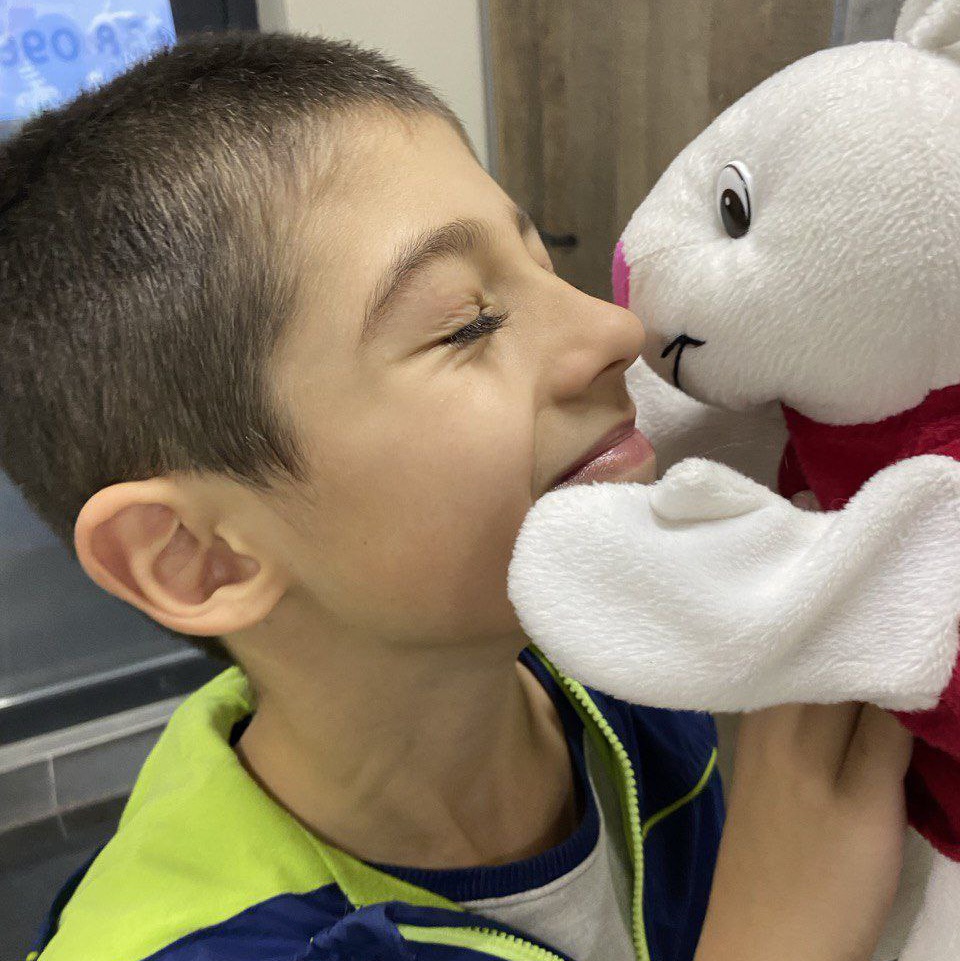
"We do it for smiles like these!" they say in the project. Photo from a therapy room in Zhytomyr.
This project changed more than one fate and became the basis of the mental well-being of many families during the war. "We will definitely use it even after the war's end and further on in individual practice," Moskalenko is convinced.
The project has many new plans and ideas. The closest is the large Toy Therapy Room conference, which will be held in Kyiv in April. The project team is also working on a film and a book about this method.
Even more useful solutions!
How to help the project?
The head of the project notes that the Toy Therapy Room volunteer project is open, and any Ukrainian man or woman can join it.
"We are always happy and grateful for toys. Often, children or adults give us whole collections of their favorite soft toys with such attention and love that, even though they are not new, they have the biggest healing effect," says Moskalenko. Moreover, people heal themselves by watching the project, rooting for it, and bringing toys. They form a strong connection and mutual support in such difficult times.
The project would gladly accept soft toys from 15 to 70 cm, washed, neat, and without mechanisms inside.
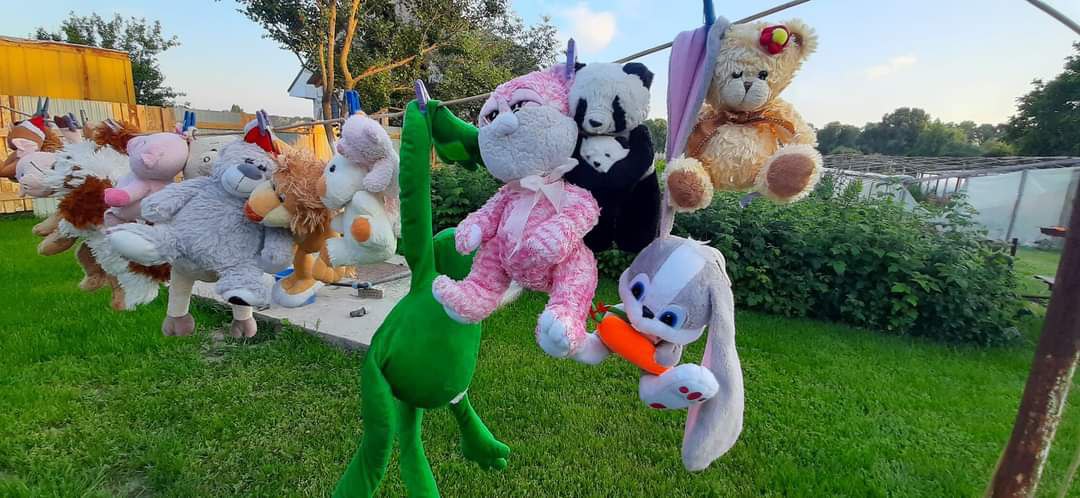
Project psychologists always have something to do — hundreds of toys were washed during the project period.
Those who wish to donate toys or join the project can contact the leaders of the rooms directly in their cities or contact project manager Vita Moskalenko – @vitamoskalenko1 and project manager Svitlana Omelnitskaya – @SvetlanaOmelnitskay via Telegram.
You can also DM the project's Facebook page in the following cases:
- If you have good toys.
- If you are a psychologist who wants to be part of the team.
- If you want to sponsor project art materials.
- If you have ideas on how to improve the project.
- If you are from a government agency and you need the help of Toy Therapy Room.
If your child needs a therapeutic toy — contact or search for rooms of the Toy Therapy Room charity project in your city.
Newsletter
Digest of the most interesting news: just about the main thing







